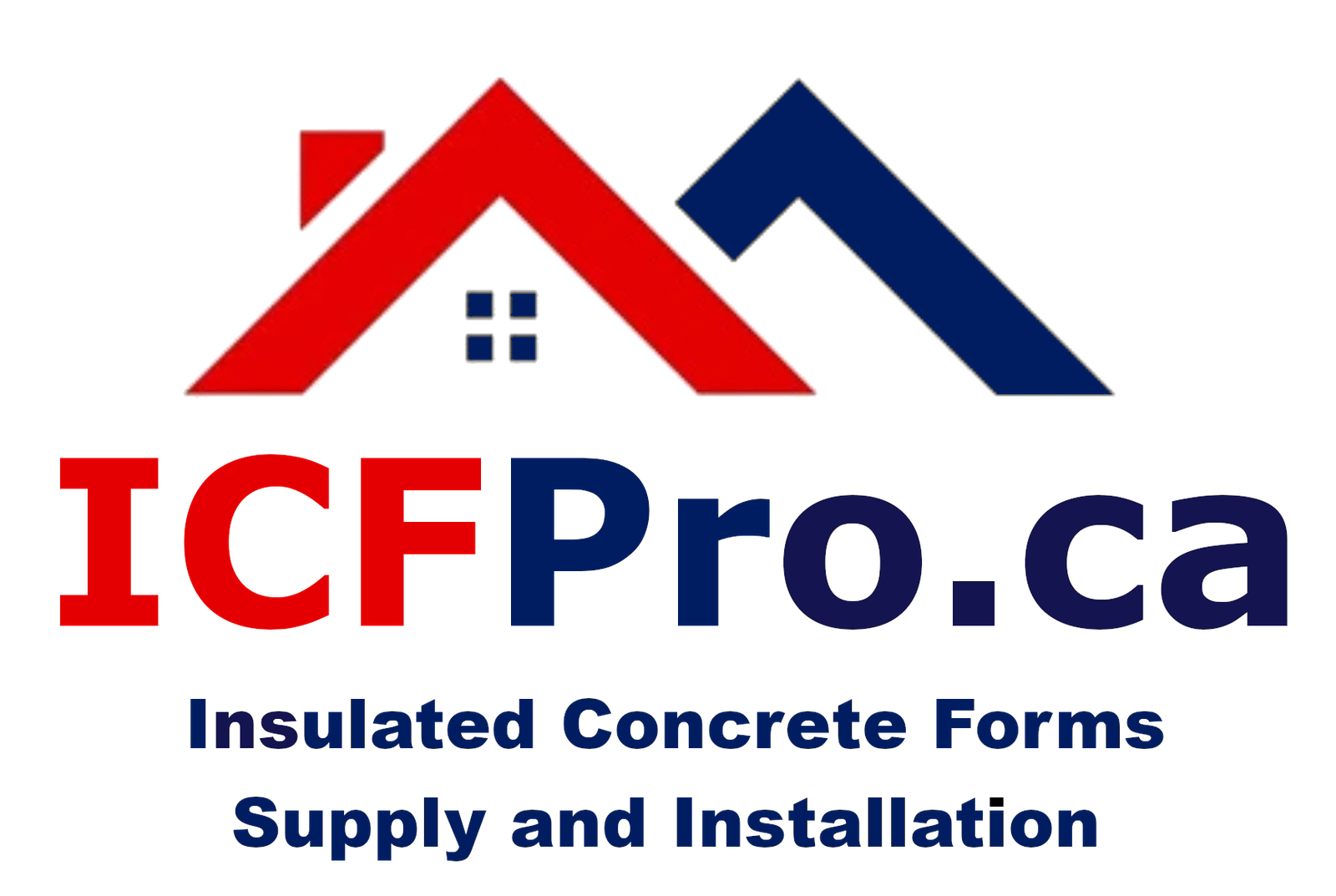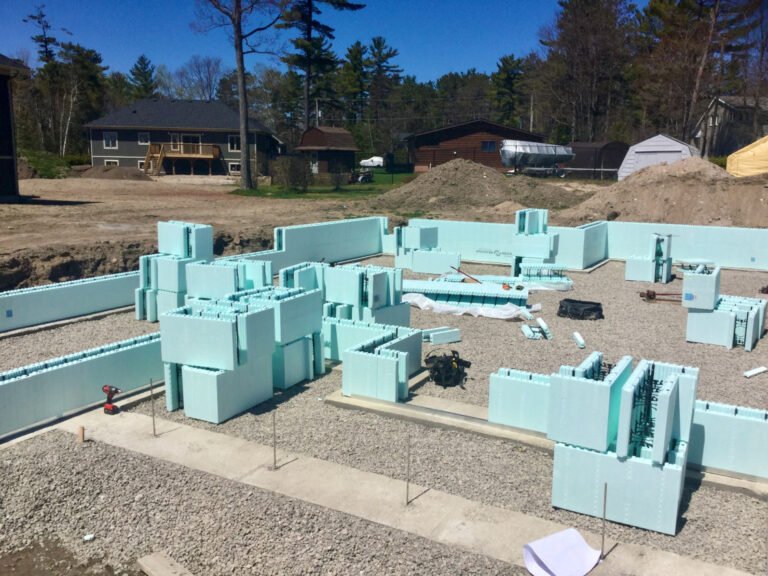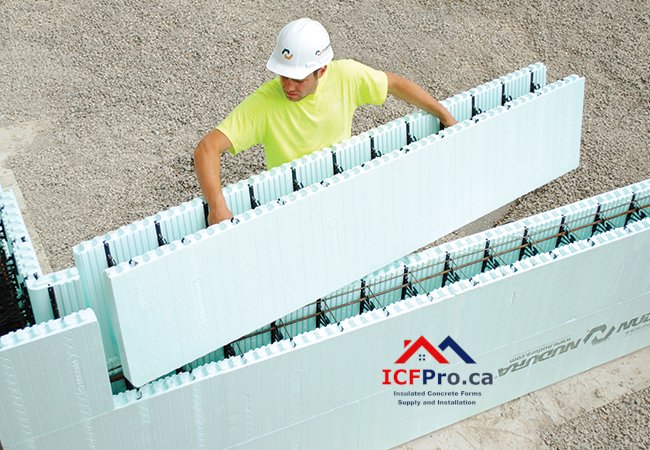ICFPro.ca is a division of ICFhome.ca - Phone 1 866 868-6606 - Direct Line 1 705 533-1633 - Email: info@icfhome.ca

ICF Basements: The Underground Game-Changer Your Home Deserves
Picture a basement that’s not just dry but delightful—a space where movie nights don’t compete with furnace roars, where winter chill stays outside, and where your wine collection ages as gracefully as the walls protecting it. This isn’t a pipe dream. It’s the reality of ICF (Insulated Concrete Form) basements, a construction revolution turning dank cellars into the most resilient, efficient rooms in your home. Let’s peel back the layers of foam and concrete to reveal why ICF basements are the future of below-grade building.
1. The Five Superpowers of ICF Basements
ICF basements aren’t just “better”—they’re engineered to outclass traditional builds in every measurable way.
A. Structural Beast Mode
- Concrete Core: 6–12 inches of steel-reinforced concrete withstand 9,000 psi pressure—enough to handle 10 feet of soil or floodwater.
- Disaster-Proof: Survives EF5 tornado winds (250+ mph) and earthquakes up to 7.5 magnitude (UC Berkeley tested).
- Settling? Never heard of her: Monolithic pours eliminate weak joints.
Real-World Flex: After the 2021 Pacific Northwest heatwave, an Oregon homeowner’s ICF basement stayed 72°F without AC, while neighbors’ basements hit 90°F.
B. Energy Efficiency Built-In
- R-22+ Insulation: EPS foam wraps walls like a thermal onesie, slashing heat loss by 70% vs. traditional concrete.
- Thermal Mass Magic: Concrete absorbs daytime heat, releasing it overnight—no more thermostat wars.
C. Silence You Can Hear
- STC 50+: Blocks 90% of noise—perfect for teen bands, Peloton addicts, or WFH sanctuaries.
D. Mold & Pest Armor
- No Organic Buffet: EPS foam and concrete starve mold and termites.
E. Resale Rocket Fuel
- 5–15% Home Value Boost: Label it a “storm-ready suite” or “energy fortress” on listings.
2. Energy Efficiency: The ICF Basement’s Secret Sauce
Forget “efficient”—ICF basements are energy-generating assets.
A. Thermal Performance Unplugged
- R-Value Consistency: EPS foam doesn’t sag or settle, maintaining R-22 for 100+ years (vs. fiberglass’s 40% drop in 10 years).
- Thermal Lag: Concrete delays heat transfer for 8–12 hours, flattening HVAC spikes.
B. Airtightness = $$$ Savings
- <0.5 ACH: Achieves near-passive-house standards, cutting infiltration losses by 80%.
- Pro Tip: Pair with an ERV (Energy Recovery Ventilator) for fresh air without energy waste.
C. Synergy with Renewables
- Geothermal Love: ICF’s thermal mass boosts ground-source heat pump efficiency by 30%.
- Solar’s Best Friend: Lower HVAC loads mean smaller, cheaper solar arrays.
Data Bomb: A 2023 DOE study found ICF basements reduce whole-home energy use by 20–25%vs. traditional builds.
3. Conquering ICF Basement Challenges
Even superheroes have flaws. Here’s how to tackle ICF’s kryptonite:
A. Upfront Costs
- Sticker Shock: 18–18–25/sq.ft vs. 12–12–18 for poured concrete.
- ROI Reality:
- Energy Savings: 1,200–1,200–2,500/year.
- Insurance Discounts: 10–20% for storm/flood resistance.
- Resale Premium: 25k–25k–50k on a $500k home.
Case Study: A Texas homeowner recouped their $30k ICF premium in 8 years via energy savings and post-hurricane insurance perks.
B. Labor Shortages
- The Gap: Only 1 in 5 contractors are ICF-certified (ICFMA 2023).
- Fix: Use ICF builder directories or manufacturer-trained crews (e.g., Logix Pro Network).
C. Backfill Blunders
- Risk: Excavators crushing foam during backfill.
- Fix:
- Use lightweight machinery (e.g., Dingo mini-loaders).
- Backfill with ¾” gravel (drains better, less pressure).
D. Waterproofing Wizardry
- Must-Have Systems:
- Exterior: Peel-and-stick membranes (Grace Ice & Water Shield) + dimple mats.
- Interior: Vapor-barrier paint on exposed foam.
4. Moisture Masterclass: Why ICF Basements Stay Desert-Dry
ICF doesn’t just repel moisture—it laughs at it.
A. No Wicking, No Worries
- EPS Foam: 0% water absorption vs. concrete block’s 15–20%.
- Vapor Barrier: Integrated 10-mil poly stops 99% of vapor diffusion.
B. Drainage Done Right
- Exterior: French drains + dimple mats cut hydrostatic pressure by 50%.
- Interior: Sump pumps with battery backups (because power outages love storms).
C. Radon? Not Here
- Pre-Installed Systems: PVC pipes under slabs vent gases safely outside.
Flood Test Verdict: 2022 trials in Louisiana showed ICF basements dry after 72 hours under 6’ floodwater; traditional basements took 3 weeks to dry.
5. Built to Outlast Your Grandkids: ICF’s Durability Edge
ICF basements aren’t built for decades—they’re engineered for centuries.
A. Crack Resistance
- Rebar Grid: #4 bars at 16” spacing resist soil shifts and frost heave.
- Concrete Mix: 4,000 PSI with air entrainment handles 100+ freeze-thaw cycles.
B. Material Immortality
- EPS Foam: 0.5% degradation over 100 years (ASTM C578).
- Concrete: Carbonation depth <0.04”/year (150-year lifespan).
C. Climate Warrior
- Fire Rating: 4-hour firewalls survive wildfires (tested to ASTM E119).
- Flood Rating: Withstands Category 5 storm surges (FEMA P-55 compliant).
Real-World Proof: A 1990s ICF basement in Minnesota remains crack-free and moldless after 30 winters.
6. The Future of ICF Basements: 2030 and Beyond
- Self-Healing Concrete: Microcapsules (like Basilisk) auto-seal cracks up to 0.8mm.
- Smart Sensors: Monitors like Sensohive track moisture/stress, alerting via app.
- Carbon-Negative Materials: Foam made from hemp or CO2 (CarbonCure’s tech).
Prediction: By 2030, 35% of basements will be ICF—up from 12% today.
Conclusion: Why Your Next Basement Must Be ICF
ICF basements aren’t a luxury—they’re a logical leap forward in homebuilding. They’re drier, quieter, and tougher than anything traditional methods offer. Yes, they cost more upfront. But in an age of climate chaos and energy instability, ICF isn’t an expense—it’s an investment in peace of mind.
Final Thought: Building an ICF basement isn’t just constructing a room—it’s laying the foundation for a home that’s ready for whatever the 21st century throws at it.



